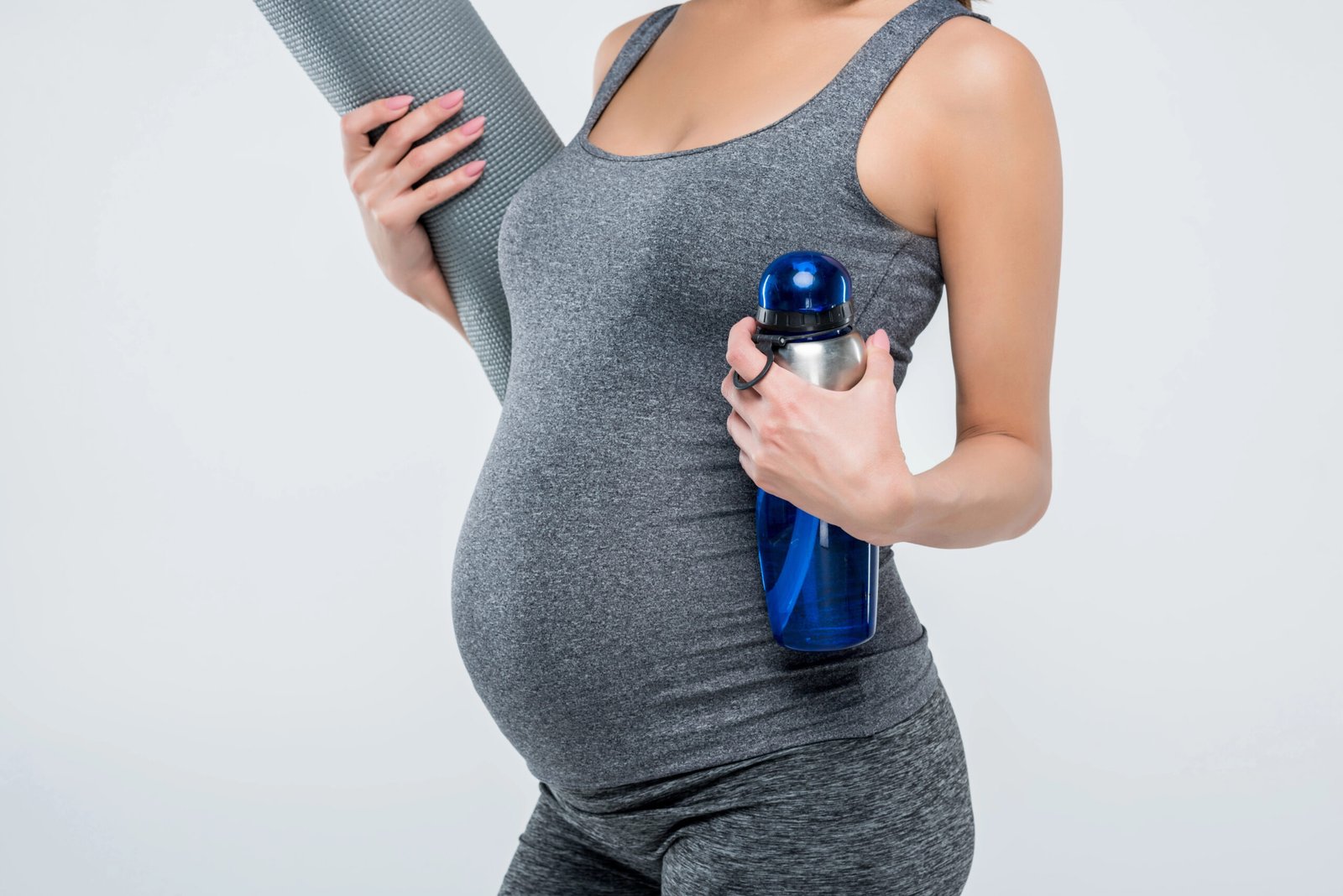General Guidelines
According to the American College of Obstetricians and Gynecologists (ACOG) and Mayo Clinic, physical activity during pregnancy is not only safe but beneficial for most women with uncomplicated pregnancies. The following are key recommendations and guidelines:

Recommended Amount of Exercise
– At least 150 minutes of moderate-intensity aerobic activity per week (as recommended by the U.S. Department of Health and Human Services)
– Activity should be spread throughout the week
– Women who were physically active before pregnancy can generally continue their pre-pregnancy activity levels
Benefits of Exercise During Pregnancy–
Reduced risk of gestational diabetes mellitus
– Lower incidence of gestational hypertensive disorders
– Decreased risk of excessive weight gain
– Lower rates of cesarean birth and operative vaginal delivery
– Reduced risk of preterm birth
– Improved postpartum recovery
– Prevention of postpartum depression
– Maintenance of physical fitness
– Improved sleep quality
– Reduced back pain and constipation
Safe Exercises During Pregnancy
The following exercises have been extensively studied and found to be safe during pregnancy:
– Walking
– Stationary cycling
– Swimming and water aerobics
– Modified yoga and pilates (avoiding positions that require lying flat on the back after the first trimester)
– Low-impact aerobics
– Resistance training with light to moderate weights
– Stretching exercises
– Dancing (note – avoid jumps)
Specific Pregnancy-Friendly Exercises
Mayo Clinic recommends these specific exercises that focus on core muscles to help improve muscle tone, strength, and endurance:
– Wall pushups
– Squats with a fitness ball
– Modified leg raises
– Step-ups
– Modified side plank
– Supported v-sits
Exercise Modifications During Pregnancy
– Start slowly and gradually increase repetitions
– Avoid exercises that risk losing balance and falling
– Modify exercises as pregnancy progresses
– Stay well-hydrated before, during, and after exercise
– Wear supportive clothing and proper footwear
– Avoid exercising in hot, humid conditions
– Avoid lying flat on your back after the first trimester
– Avoid activities with high risk of falling or abdominal trauma
Safety Precautions
Warning Signs to Stop Exercise
Women should stop exercising and contact their healthcare provider if they experience:
– Vaginal bleeding
– Regular painful contractions
– Amniotic fluid leakage
– Shortness of breath before exertion
– Dizziness or feeling faint
– Headache
– Chest pain
– Muscle weakness
– Calf pain or swelling
– Decreased fetal movement
Contraindications to Exercise During Pregnancy
Exercise may NOT be recommended for women with:
– Certain types of heart and lung diseases
– Cervical insufficiency or cerclage
– Multiple pregnancy with risk factors for preterm labor
– Persistent second or third-trimester bleeding
– Placenta previa after 26 weeks of gestation
– Preterm labor during the current pregnancy
– Ruptured membranes
– Preeclampsia or pregnancy-induced hypertension
– Severe anemia
Trimester-Specific Considerations
First Trimester
– Focus on establishing a routine
– Be aware of increased fatigue and nausea
– Avoid overheating
– Stay well-hydrated
Second Trimester
– Modify exercises as your center of gravity changes
– Avoid exercises that require lying flat on your back
– Consider using a maternity support belt if needed
– Be aware of loosening ligaments and joints
Third Trimester
– Further modify exercises as size and weight increase
– Reduce intensity as needed
– Focus on balance and stability
– Consider water exercises to reduce joint stress
– Prepare for labor with pelvic floor exercises and squats
Postpartum Exercise
– Gradually return to physical activity after childbirth
– Usually safe to resume light exercise within days of delivery for uncomplicated vaginal births
– Wait for healthcare provider clearance after cesarean delivery (typically 4-6 weeks)
– Begin with gentle exercises focusing on the pelvic floor
– Gradually increase intensity and duration
– Be aware of physical changes, including looser joints and ligaments
– Consider exercises that can include your baby
Always get approval from your health care professional (e.g. Obstetrician, Midwife) before starting any exercise program, especially during pregnancy.
Recent Research Findings
A 2025 study from the University of Alberta confirmed that high-intensity resistance training during pregnancy is safe and well-tolerated for women with uncomplicated pregnancies who were already engaging in regular exercise before pregnancy.
Sources
– American College of Obstetricians and Gynecologists (ACOG), “Physical Activity and Exercise During Pregnancy and the Postpartum Period,” Committee Opinion Number 804, April 2020 (Reaffirmed 2023)
– Mayo Clinic, “Pregnancy exercises,” August 2023
– U.S. Department of Health and Human Services, Physical Activity Guidelines for Americans, 2018
– University of Alberta, “Study confirms safety of high-intensity resistance training during pregnancy,” March 2025



